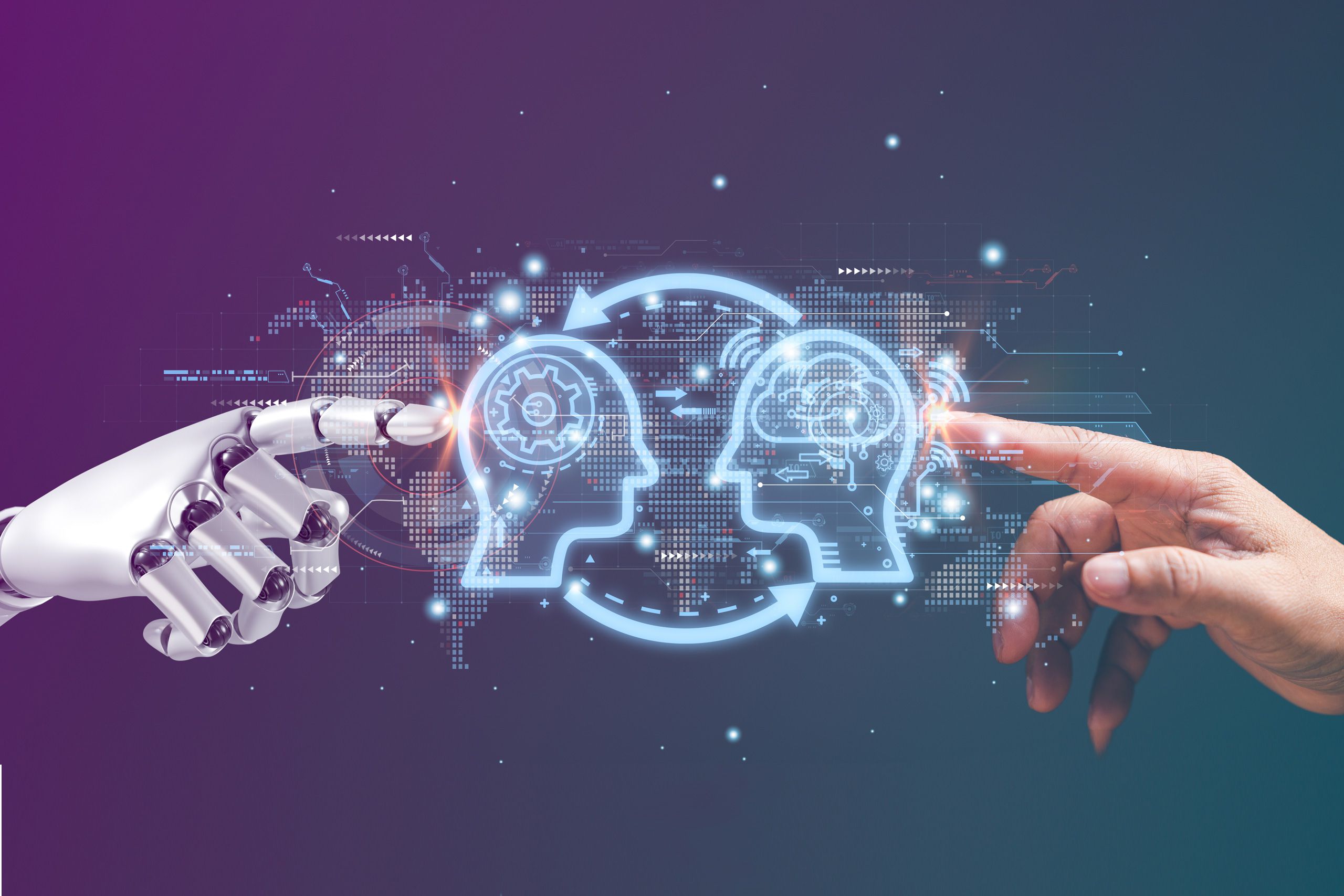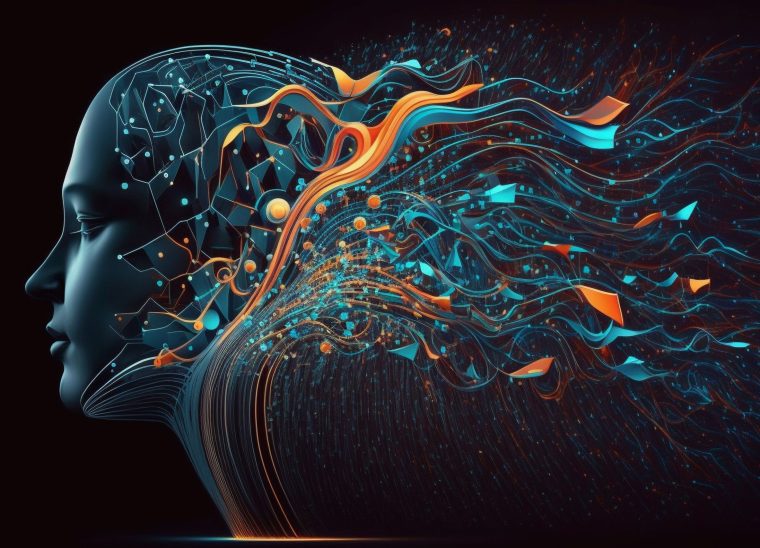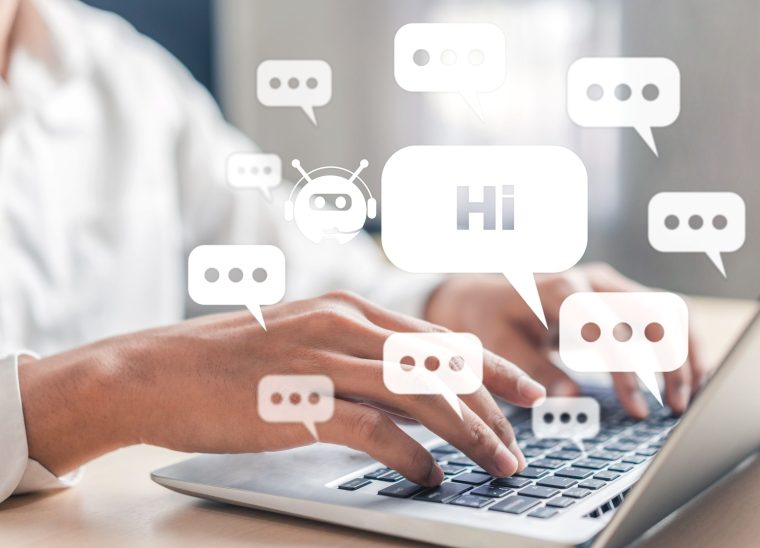Chatbots have become a top-rated tool to optimize and automate companies' Customer Support. What if we told you that we could boost their efficiency even more? Explore with us the benefits of using the language processing and the learning model of ChatGPT in Customer Service.
What is a Chatbot?
A chatbot, or conversational robot, is a piece of software that can communicate with its users. Because it has this capability, it can automate conversations between customers and brands, thus optimizing customer services, particularly repetitive tasks and processes.
Chatbots provide immediate responses every day of the year and enable self-service support for users; in this way, contact center employees don't have to deal with countless requests and simple questions and can focus on more complex issues, allowing them to improve their performance.
In addition, chatbots are a great way to be closer to customers, as we can integrate them into websites and instant messaging applications, such as Facebook Messenger and WhatsApp.
These virtual assistants are very efficient at solving customer service challenges because they use Artificial Intelligence technologies such as Natural Language Processing (NLP) and Machine Learning, which enable them to understand what is being asked and respond accordingly, all in a very human-like way.
Because of all these features, more and more companies are implementing chatbots into their digital contact channels. In fact, according to a report by Grand View Research, the global chatbots market is expected to reach $9.4 billion by 2024.
What is ChatGPT?
ChatGPT has received much media attention, but what does it consist of? Well, ChatGPT is a conversational AI chatbot that uses a natural language processing model or LLM (Large Language Model) called GPT-4 and was created by OpenAI, an Artificial Intelligence research and development company.
Similar to the chatbots we know, this model is also designed to facilitate human-computer interactions through natural language. However, it’s trained based on vast text inputs using Deep Learning algorithms.
Deep Learning is a subfield of Machine Learning that enables learning complex data representations and achieving state-of-the-art performance in various tasks.
That said, this LLM can be used in a wide variety of tasks involving natural language processing, such as answering questions.
The differences between a chatbot and ChatGPT
As we mentioned, chatbots and ChatGPT are designed to talk with humans. However, they perform on different levels.
ChatGPT is trained with almost unlimited data; it has a greater understanding of human language and its application in numerous contexts. This enables it to generate responses to diverse requests, whether they are questions, statements, or even incomplete sentences.
In addition, it uses a sophisticated language model architecture to generate contextually relevant, coherent, and often quite convincing responses.
On the other hand, chatbots typically use rule-based learning algorithms. These are programmed to respond to the users' keywords or phrases.
Unlike ChatGPT, most chatbots are limited to a narrow set of predefined responses and cannot generate innovative, contextually relevant responses to various stimuli.
Why not just use ChatGPT in Customer Service?
The truth is that ChatGPT can be used in Customer Service, but it may not be the most suitable solution in many cases and for several reasons:
- Its complexity. Because it’s a sophisticated linguistic model, it requires significant computational resources to run, and its implementation in Customer Service would require considerable investments in hardware and infrastructure.
- The impossibility of customization. Chatbots for Customer Service must be highly customizable to meet each company's specific needs and requirements. Although ChatGPT generates contextually relevant responses, it's not tailored to the needs of brands and their customers.
- The high costs. Using ChatGPT in Customer Service would be pretty expensive, as these language models require ongoing development and maintenance.
- Control. ChatGPT generates responses based on patterns it has learned from large amounts of data, which means it can potentially generate inappropriate or offensive responses. In contrast, traditional chatbots can be programmed with specific rules and guidelines to ensure they respond appropriately to customers.
In short, despite being a powerful tool that provides relevant and contextualized answers, ChatGPT is not the most effective solution for Customer Service.
ChatGPT is incredibly limited but good enough at some things to create a misleading impression of greatness. It's a mistake to be relying on it for anything important right now. It's a preview of progress; we have lots of work to do on robustness and truthfulness.
Sam Altman, CEO of OpenAI
How to Take Advantage of the Technology of ChatGPT in Customer Service?
In the previous point, we saw why ChatGPT alone is not the most suitable tool for Customer Service. Still, we can take advantage of its language learning and processing model.
Adding one good thing to another, we can have a chatbot based on a more advanced NLP model and simultaneously use each company's knowledge base. In this way, we get a solution that can understand the context of a conversation and generate responses that are not limited to a predefined set.
This means that chatbots with GPT-4 can provide more personalized and accurate answers to customer questions, even when they are complex or open-ended.
Therefore, to use the technology of ChatGPT in your Customer Service, you must:
- Identify FAQs (frequently asked questions). That is, the questions your customers ask most often about your products/services, including requests for documentation, account details, etc.
- Train GPT-4 with your knowledge base. You can train the model based on the answers to your customers' questions and generate relevant responses. One of the advantages of adding GPT-4 to your Conversational AI chatbot is that you can enhance the model within your domain to improve the accuracy of the responses.
- Implement GPT-4 in your chatbot. After you train your LLM model, you can integrate it into your chatbot. So when a customer asks a question, the chatbot processes it with GPT-4 and generates a response based on the training data, in this case, your knowledge base.
- Test and refine. It is crucial to test your chatbot thoroughly to ensure the best results. With these tests, you will see if you need to change the training data or adjust the model parameters to improve the performance of the solution further.
What are the use cases for the learning model of ChatGPT in Customer Service?
ChatGPT (Conversational AI chatbot + GPT-4) can generally improve the user experience, and there are several use cases for it.
- Chatbots. As we have already seen, they can offer immediate support by answering frequently asked questions, solving problems, and providing personalized recommendations while decreasing wait times and increasing overall user satisfaction.
- Automating email responses. As one of the contact channels with the most extended wait times to get a response, this LLM can generate automated email responses for the most common requests.
- Personalized product/service recommendations. ChatGPT can recommend products based on preferences and purchase history through user data analysis. In this way, it can also increase engagement with customers.
- Sentiment analysis. ChatGPT technology also enables you to analyze your customers' feedback and study the trends around specific products or services. Then, you can improve your services and products based on that feedback.
- Translations. Because it's an advanced linguistic model, it can jump from language to language. This can be useful if you have non-native customers communicating with your chatbot.
A solution that keeps up with trends
At Visor.ai, we’re always looking for the latest trends and innovating our automation solutions to provide our customers with the best results.
Because we see the advantages of this model, we already have solutions integrated with GPT-4, where we put together our customers' information and the power of this technology.
Click here and try the small demo we made for you. Discover the future of smart interactions!


